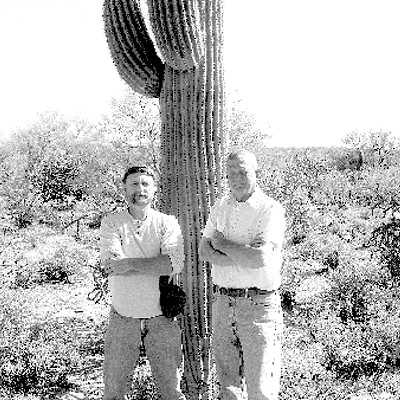I recently moved from Sasabe, a tiny town located next to the border wall. The wall was built of bars 15 feet tall and looked like a long prison cell. It ran 4 miles east until it hit an arroyo on the Buenos Aires National Wildlife Refuge, and 3 miles west until it met the foothills of the Pozo Verde Mountains.
I lived in Sasabe for seven months, and when I left, the population was reduced to 11 people. I'd become familiar with the town while documenting signs of mountain lions on the neighboring wildlife refuge for eight years. Every day, I saw the wall, National Guard troops, Border Patrol agents and the billion-dollar, high-technology surveillance towers that did not work.
Sometimes, I witnessed illegal immigrants walking in the Arizona desert, and I'd sometimes run into drug-smugglers resting under mesquite trees close to my home.
From the perspective of a resident of Sasabe, border enforcement seemed like an illusion, the wall an expensive prop. A group of 15 illegal immigrants once ran through the empty lot next to my home, jumped into a pickup truck and sped off. They came from the direction of the wall, though that section was monitored by a National Guard lookout. It took four days before a Border Patrol agent showed up.
Corruption involving the Border Patrol is well-documented, but the most-appalling story about flawed border enforcement while I lived and worked in the area involved Border Patrol Agent Brian Terry. He was killed while on duty by border bandits who used a weapon provided by Operation Fast and Furious, which was run through the Arizona U.S. Attorney's Office and the Phoenix office of the Bureau of Alcohol, Tobacco, Firearms and Explosives. This operation supplied weapons to criminals in hopes of tracking them to Mexican cartels. I was told that after Terry's death, agents began questioning why they should put their lives on the line when they might be gunned down with a weapon provided by their fellow agencies.
Meanwhile, illegal immigrants kept climbing over the wall with the aid of ropes and crude ladders—or by just walking around it. According to a refuge officer, drug-smugglers started carrying loads of marijuana cut to fit through the 4-inch spaces between the bars of the wall.
It seemed the only thing the wall could stop was the migration of wildlife.
Usually, the Department of Homeland Security did not care about wildlife, though in September 2008, one incident definitely bothered officials. A Border Patrol agent within the Buenos Aires refuge saw a mountain lion running back and forth in front of the wall, apparently frantic to get to the other side. He also saw the lion trying to stick its head through the bars of the wall. The sight was so alarming that the agent took several photos and video of the lion's effort, and some of his photos ran in a few news outlets.
After I received a phone call from the refuge about the lion, I placed a remote camera near the wall in case the animal returned. A few months later, my camera disappeared. Thanks to the help of refuge officers, I learned that the Border Patrol had confiscated my camera. Initially, the chief patrol agent informed me that my camera had been "removed" because agents weren't sure who it belonged to and didn't want the "bad guys" monitoring them. Weeks later, my camera was returned, and I had a chance to question a Border Patrol liaison officer, who offered another explanation: Officials in the agency had seized the video of the lion and my camera, because images of wildlife trapped by the wall were viewed as a potential public-relations nightmare.
The wall had been controversial from the onset because it went through the wildlife refuge, and if refuge officials had tried to block construction, there's no question they would have failed. All Homeland Security Secretary Michael Chertoff had to do was invoke the REAL ID Act passed by Congress in 2005, which circumvented all environmental laws and safeguards.
As for the lion, its fate is unknown. The flow of illegal immigrants and drug-smugglers remains constant, though, because for them, the wall is just a minor obstacle, a temporary barrier.








